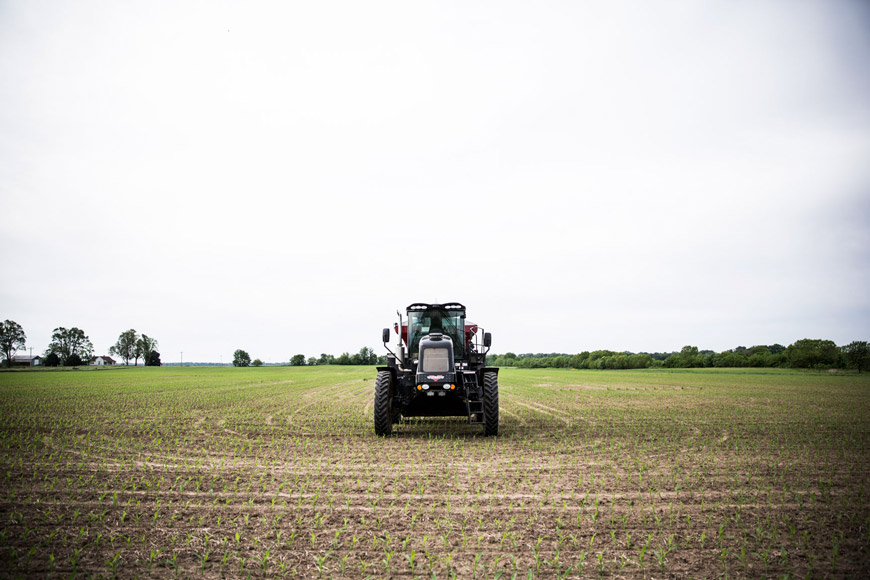Use an In-Season Checklist to Maintain Yield Potential

It’s time to put months of preseason planning into action. I’m sharing a checklist to help you make sure you’ve got the essentials covered based on my time spent with farmers in the field. Review these management practices to help maximize the potential of your crop.
Review response-to scores for corn.
Each season, WinField United evaluates all CROPLAN® hybrids and many of our partner hybrids to evaluate their response-to management practices, including planting population, nitrogen, crop rotation and fungicide applications. Our 2018 Answer Plot® data revealed that individual hybrid response varied widely to these production practices. Here’s a summary of our findings:
Reviewing a hybrid’s response-to scores can help you customize the management of each field to maximize return on investment.
Plan a tissue-testing strategy.
Tissue sampling is one way to identify plant nutrition deficiencies before you see symptoms in the field. A proactive sampling plan can help you pinpoint where your fertility plan may be falling short. That means you can supplement those nutrients that are needed instead of fertilizing blindly, which may be less economical. Combined with soil sampling, tissue sampling is an effective diagnostic tool for mitigating plant nutrition deficiencies and agronomic issues in your field.
Use ag tech tools to target scouting efforts.
There are plenty of ag tech tools available to help you improve efficiency on the farm, so I recommend identifying the needs you’re hoping to address and working with your advisor to find the best solution for you. One option, the R7® Field Monitoring Tool(FMT), can be useful for identifying potential issues, even before seed goes into the ground. For example, if the tool shows fields greening up before planting, it could indicate that there is heavy weed pressure that needs to be addressed.
As the season progresses, the FMT can help you identify other potential yield threats, including flooded areas in your field, poor plant vigor or insect feeding. While the tool can deliver incredible insights about crop health, further examination with drones or in-field scouting is required to validate issues.
Stay flexible this season
The steps above can help you stay on track this season. Every production decision you make has the potential to affect your bottom line. It’s important to stay true to the plan you’ve developed, but you also need to allow flexibility for unforeseen circumstances.
For more information about in-season management strategies to maximize yield, talk with your locally owned and operated WinField United retailer.
1. National average difference between planting 30,000 plants per acre and 37,500 plants per acre.
2. National average difference between limited and non-limited nitrogen applications; rates varied by soil type and location.
3. National average difference between first-year corn and corn-on-corn rotations.
4. National average difference between fungicide application at V5/R1 and untreated control.
© 2019 WinField United. Answer Plot®, CROPLAN®, R7® and WinField® are trademarks of WinField United.
Review response-to scores for corn.
Each season, WinField United evaluates all CROPLAN® hybrids and many of our partner hybrids to evaluate their response-to management practices, including planting population, nitrogen, crop rotation and fungicide applications. Our 2018 Answer Plot® data revealed that individual hybrid response varied widely to these production practices. Here’s a summary of our findings:
- Planting population: -3.8- to 20.8-bushel-per-acre yield response range1
- Nitrogen: 58.4- to 119.4-bushel-per-acre yield response range2
- Rotation: 6.9- to 29.8-bushel-per-acre yield response range3
- Fungicide: -3.5- to 39.5-bushel-per-acre yield response range4
Reviewing a hybrid’s response-to scores can help you customize the management of each field to maximize return on investment.
Plan a tissue-testing strategy.
Tissue sampling is one way to identify plant nutrition deficiencies before you see symptoms in the field. A proactive sampling plan can help you pinpoint where your fertility plan may be falling short. That means you can supplement those nutrients that are needed instead of fertilizing blindly, which may be less economical. Combined with soil sampling, tissue sampling is an effective diagnostic tool for mitigating plant nutrition deficiencies and agronomic issues in your field.
Use ag tech tools to target scouting efforts.
There are plenty of ag tech tools available to help you improve efficiency on the farm, so I recommend identifying the needs you’re hoping to address and working with your advisor to find the best solution for you. One option, the R7® Field Monitoring Tool(FMT), can be useful for identifying potential issues, even before seed goes into the ground. For example, if the tool shows fields greening up before planting, it could indicate that there is heavy weed pressure that needs to be addressed.
As the season progresses, the FMT can help you identify other potential yield threats, including flooded areas in your field, poor plant vigor or insect feeding. While the tool can deliver incredible insights about crop health, further examination with drones or in-field scouting is required to validate issues.
Stay flexible this season
The steps above can help you stay on track this season. Every production decision you make has the potential to affect your bottom line. It’s important to stay true to the plan you’ve developed, but you also need to allow flexibility for unforeseen circumstances.
For more information about in-season management strategies to maximize yield, talk with your locally owned and operated WinField United retailer.
1. National average difference between planting 30,000 plants per acre and 37,500 plants per acre.
2. National average difference between limited and non-limited nitrogen applications; rates varied by soil type and location.
3. National average difference between first-year corn and corn-on-corn rotations.
4. National average difference between fungicide application at V5/R1 and untreated control.
© 2019 WinField United. Answer Plot®, CROPLAN®, R7® and WinField® are trademarks of WinField United.





